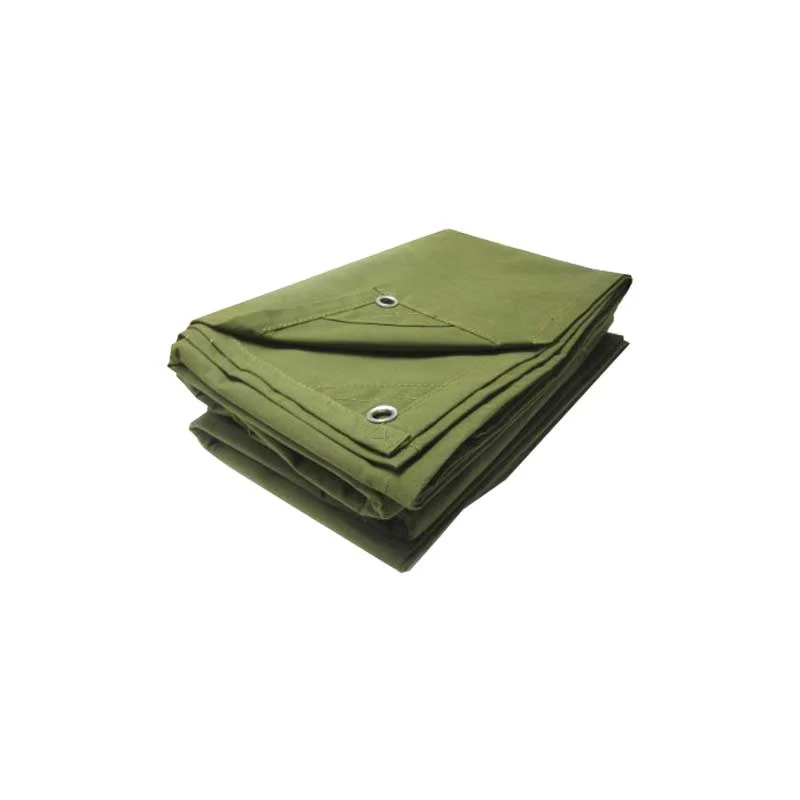Tarpaulin, commonly referred to as a tarp, is a versatile material used for various purposes ranging from protection against weather elements to covering and securing goods during transportation. In this comprehensive guide, we address the most frequently asked questions about tarpaulin to provide you with a thorough understanding of its uses, characteristics, and significance.
Q1. What is the meaning of tarpaulin?
Tarpaulin, often abbreviated as tarp, is a heavy-duty, waterproof material typically made of polyethylene or canvas. Its primary purpose is to provide protection against weather conditions such as rain, sunlight, and wind.
Q2. What is a tarpaulin sheet?
A tarpaulin sheet is a large piece of tarpaulin fabric that comes in various sizes and thicknesses. Moreover, it is commonly used for covering and protecting objects, surfaces, or areas from environmental factors.
Q3. What are tarpaulin sheet sizes?
Tarpaulins sheets come in a range of sizes to accommodate different needs. Standard sizes include small sizes for personal use, medium sizes for covering equipment or vehicles, and large sizes for industrial or commercial applications.
Q4. What is tarpaulin cloth used for?
Tarpaulins cloth is utilized for a multitude of purposes, including covering goods during transportation, protecting surfaces from debris and weather damage, creating temporary shelters, and even as a groundsheet for camping or outdoor activities.
Q5. Are tarpaulins waterproof?
Yes, tarpaulins are designed to be waterproof, making them ideal for outdoor use where protection against rain and moisture is essential. This characteristic ensures that the covered items remain dry and unaffected by water.
Q6. Why are tarpaulins important?
Tarpaulins play a crucial role in various industries and activities by providing cost-effective and reliable protection against environmental elements. Whether used in agriculture, construction, transportation, or outdoor recreation, tarpaulins help safeguard assets and ensure operational efficiency.
Q7. What are tarpaulin covers?
Tarpaulin covers refer to sheets of tarpaulins used to cover and protect objects, surfaces, or areas from weather damage, dust, debris, and other external factors. Furthermore, these covers come in different sizes and can be customized to fit specific requirements.
Q8. Can tarpaulin be used as a groundsheet?
Yes, tarpaulins can be used as ground sheets or ground covers during camping, picnics, or outdoor events. Their waterproof and durable nature provides an additional layer of protection against moisture and rough terrain.
Q9. Can tarpaulin be recycled?
Yes, tarpaulins can be recycled, although the process may vary depending on the type of material used in their construction. Recycling tarpaulins helps reduce waste and promotes environmental sustainability by repurposing the material for other applications.
Q10. Can tarpaulin go in the washing machine?
While some tarpaulins may be machine washable, it is recommended to check the manufacturer’s instructions and guidelines before attempting to clean them. In most cases, tarpaulins can be easily cleaned with mild soap and water or by wiping them down with a damp cloth.
Q11. How is tarpaulin manufactured?
Tarpaulins are typically manufactured through a process of weaving or knitting synthetic fibers such as polyethylene or PVC-coated polyester. These materials are then treated with waterproofing agents and reinforced with grommets or eyelets for added durability and strength.
Q12. Tarpaulin how long?
The lifespan of a tarpaulins depends on various factors such as the quality of the material, frequency of use, and exposure to environmental conditions. High-quality tarpaulins can last for several years with proper maintenance and care.
Q13. What is tarpaulin made of?
Tarpaulins are commonly made of polyethylene, a type of plastic known for its durability, flexibility, and waterproof properties. Additionally, other materials used in tarpaulin construction include canvas, PVC, and vinyl, each offering specific advantages depending on the intended use.
Q14. What is tarpaulin used for?
Tarpaulins have countless applications across different industries and activities, including agriculture, construction, transportation, camping, landscaping, and emergency response. Moreover, they are used for covering and protecting goods, equipment, surfaces, and structures from weather damage, dust, and debris.
Q15. When to use tarpaulin?
Tarpaulins are used whenever protection against weather elements or environmental factors is required. Whether covering a roof under construction, securing cargo during transportation, or creating a temporary shelter outdoors, tarpaulins offer versatile solutions for various situations.
Q16. When was tarpaulin invented?
The exact origins of tarpaulins are unclear, but it is believed to have been invented centuries ago for maritime purposes. Sailors used treated canvas or fabric to cover and protect cargo and sails from seawater, thus giving rise to the modern tarpaulin.
Q17. From where to buy tarpaulin?
Tarpaulins are readily available for purchase from hardware stores, outdoor retailers, online marketplaces, and specialty suppliers. Therefore, it is essential to choose a reputable supplier that offers high-quality tarpaulins suitable for your specific needs and requirements.
Q18. Which tarpaulin is best?
The best tarpaulins for your needs depends on factors such as intended use, size requirements, material preferences, and durability expectations. Consider factors like waterproofing, UV resistance, tear strength, and grommet quality when selecting the right tarpaulins for your application.
Q19. Who invented tarpaulin?
The invention of tarpaulins is attributed to sailors and seafarers who used treated canvas or fabric to protect cargo and sails aboard ships. Over time, gradually, tarpaulins evolved into versatile materials used across various industries and applications.
Tarpaulins are indispensable tools offering protection, versatility, and durability for a wide range of uses. Whether shielding equipment from the elements, creating makeshift shelters, or securing goods during transportation, tarpaulins continue to play a vital role in numerous industries and activities. With proper maintenance and care, tarpaulins can provide reliable protection for years to come.
